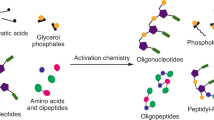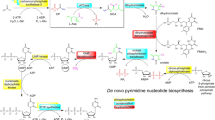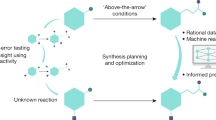Abstract
THAT Wöhler synthetized urea in 1828 and there by rang the death-knell of vitalism in organic chemistry seems to be as firmly established a legend as that Galileo let fall at one and the same time from the leaning tower at Pisa two unequal weights, the thud of the simultaneous arrival of which upon the ground rang out the old Aristotelianism and rang in the new mechanics. But, as in the earlier, so in the later case, the facts are otherwise: there was no synthesis of urea, and chemists continued to assert the existence of vital force and to describe its role in the formation of organic substances. Wöhler's experiments have, however, acquired an altogether inexplicable and widespread significance, both- in text-books and in popular scientific works, especially among those whose statements show that they cannot possibly have referred to his own account of them.
This is a preview of subscription content, access via your institution
Access options
Subscribe to this journal
Receive 51 print issues and online access
$199.00 per year
only $3.90 per issue
Buy this article
- Purchase on Springer Link
- Instant access to full article PDF
Prices may be subject to local taxes which are calculated during checkout
Similar content being viewed by others
References
Pogg. Ann., 12, 253–56 (1828). In 1812 John Davy obtained urea, but was unaware of it, by the action of ammonia and phosgene (Phil. Trans., Pt. 1, 145–46; 1812); he gives no details as to the source of the carbon monoxide used in the preparation of the phosgene.
Ann. Chim., 37, 330–34 (1828).
Quart. J. Sci., Pt. 1 (April–June), 491–92 (1828).
The process is described in the almost contemporary text-book of Edward Turner, the flrst professor of chemistry in University College, London: "Ferrocyanate of potash" is "made on a large scale in the arts by igniting dried blood or other animal matters, such as hoofs and horns, with potash and iron. By the mutual reaction of these substances at a high temperature, ferrocyanuret of potassium, consisting of one equivalent of the radical of ferro-cyanic acid … and two equivalents of potassium, is generated. Such at least is inferred to be the product; for on digesting the residue in water, a solution of ferrocyanate of potash is obtained. … When heated to 212° F., or even below that temperature, each equivalent of the salt parts with three equivalents of water, leaving one equivalent of ferrocyanuret of potassium. … On heating the dry compound to full redness in close vessels, decomposition takes place, nitrogen gas is disengaged, and cyanuret of potassium mixed with carburet of iron remains in the retort." ("Elements of Chemistry, etc.", 3rd edn., 658; London, 1831).
Wallach, O., "Briefwechsel zwischen J. Berzelius und F. WÖhler, etc.", i, 206 (Leipzig, 2 vols., 1901).
Wallach, O., op. cit., i, 208.
Wöhler had recently (1827) isolated aluminium.
Wallach, O., op. cit., i, 208–9.
Ann. Chem., 54, 145 (1845).
Ann. Chem., 54, 182 (1845).
Ann. Chim., iii, 10, 233–37 (1844).
Schloremmer, C., "The Rise and Development of Organic Chemistry", 195–96 (revised ed.; London, 1894).
"Traité de chimie etc.", 2de. édn. francaise, trad. Hoefer et Esslinger, v, 1–3 (Paris, 1849).
Delacre, M., "Histoire de la chimie", 372 (Paris, 1920).
C.R., 15, 498 (Sept. 5, 1842).
Revue scientifique et industrielle â| du docteur Quesneville, 10, 145 (Paris, 1842). I am pleased to express my thanks to the Curators of the Bodleian Library for their courtesy in allowing me to consult this volume.
ibid., 147.
Berichte d. deutsch. chem. Geseu., 15, 3152–53 (1882). The quotations in English preceding the extract from Hofmann's notice are taken from T. E. Thorpe's "Essays in Historical Chemistry" 302–3 (2nd ed., London, 1902).
Author information
Authors and Affiliations
Rights and permissions
About this article
Cite this article
MCKIE, D. Wöhler's 'Synthetic' Urea and the Rejection of Vitalism: A Chemical Legend. Nature 153, 608–610 (1944). https://doi.org/10.1038/153608a0
Issue Date:
DOI: https://doi.org/10.1038/153608a0
This article is cited by
-
Efficient urea electrosynthesis from carbon dioxide and nitrate via alternating Cu–W bimetallic C–N coupling sites
Nature Communications (2023)
-
Hidden Concepts in the History and Philosophy of Origins-of-Life Studies: a Workshop Report
Origins of Life and Evolution of Biospheres (2019)
Comments
By submitting a comment you agree to abide by our Terms and Community Guidelines. If you find something abusive or that does not comply with our terms or guidelines please flag it as inappropriate.



